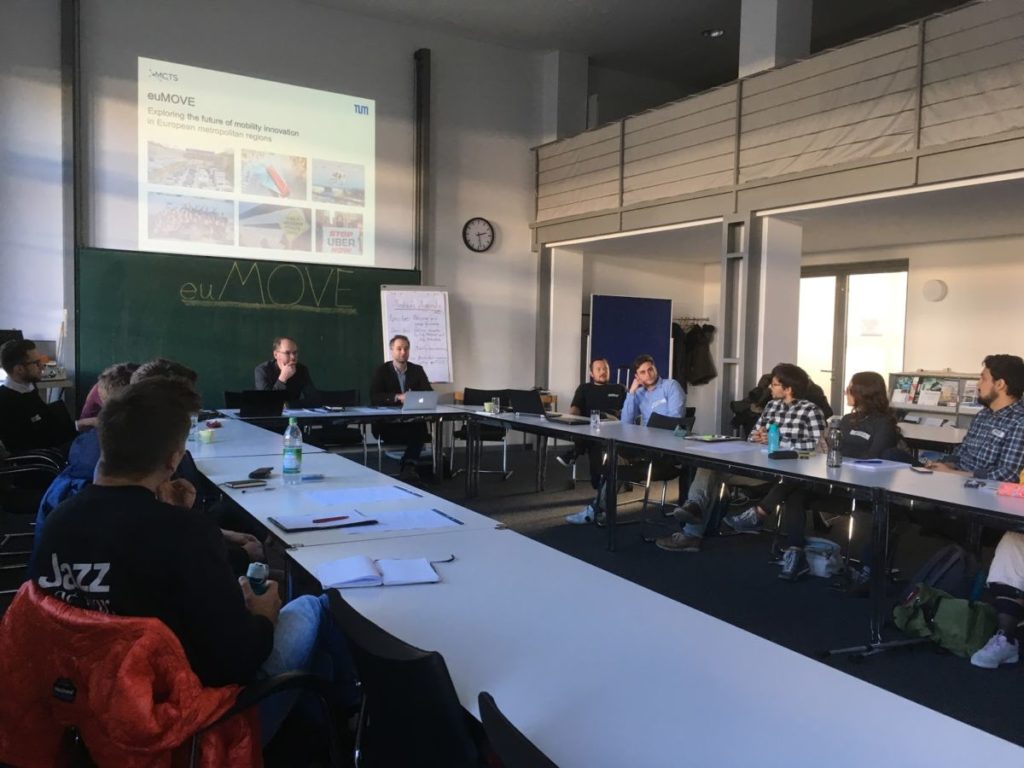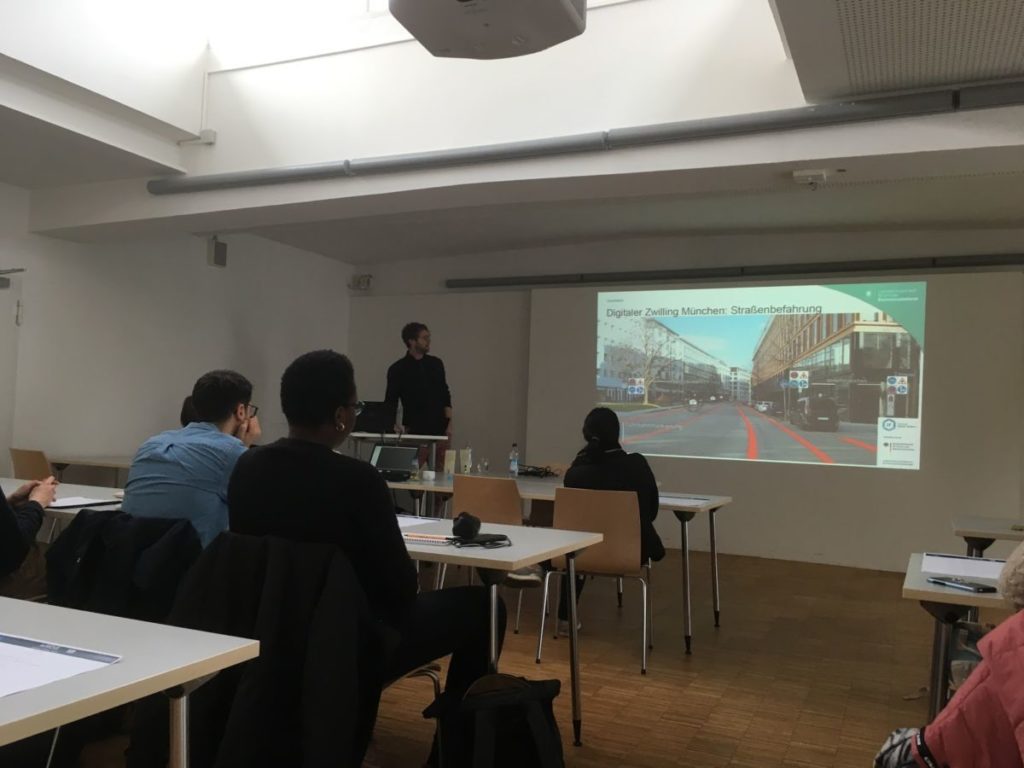by Carlos Cuevas Garcia, TUM
How are European cities designing their futures of mobility?
SCALINGS researchers are involved in the coordination of a new student project called euMOVE, in which 12 students from different departments across TUM will explore this question in the coming months.
Mobility is a huge topic to look at. Cities and metropolitan and rural areas are facing the challenge of making their mobility sector safer, more accessible and sustainable, and at the same time make room for their growing populations. No single academic discipline can deal with the challenge alone, so new interdisciplinary approaches are required, and co-creation has a huge role to play there.
This summer I was invited to participate in the coordination of a new project for students of the Technical University of Munich. The idea of the course is that students from different departments including automotive and environmental engineering, transport planning, management, and science and technology studies are put together in teams to explore the mobility landscape of Munich and other European cities of their choice. The students will visit these cities to conduct intensive research for about two weeks. A crucial part of the task is to look at the projects that cities are implementing to improve their mobility systems. This includes the public transport system but also enabling other concepts such as car sharing, e-bikes and e-scooters, and making it all nicer and easier for pedestrians… And for pedestrians with different needs. The students will be supported to identify how different cities imagine their future and what visions of the future they consider desirable.
There are many points of convergence between the work that we conduct on SCALINGS and the work that students will carry out. We both are concerned with how novel technologies are being designed, tested, and brought into society. Just as on SCALINGS, the students participating in euMOVE will have to learn to think about what is special about a particular locality, and why similar “solutions” might be assessed differently in different sites. With this, the students will acquire expertise on conducting comparative research, and they will become reflexive about transferability and upscaling of new mobility concepts.
On SCALINGS, we have paid careful attention to autonomous vehicles and to the environments in which they are tested, and so will the students. Yet, the novel aspect of euMOVE is the focus on wider socio-technical systems that are being putting into test. Mobility is a very attractive topic to look at because in involves different elements, technologies and organizations. And since we all are users of mobility systems, we all have something to say about them, something to celebrate and something to critique. This is why mobility is a fascinating topic to engage with.
Together with colleagues from the chair of automotive technology and the chair of urban structure and transport planning, we organized and held the Kick-off week from the 18th to the 20th of November. The 12 selected students had the chance to get to know each other and they listened to some very insightful talks from TUM researchers, staff from the City Council of Munich, and from a couple of companies and consultancies.
On the first day Prof. Sebastian Pfotenhauer, who is also the SCALINGS’ coordinator, and Prof. Gebhard Wulfhorst introduced the initiatives on mobility at TUM and shared their expectations about the euMOVE project.

Then we all did a brainstorming exercise, and then I gave a presentation together with my colleague Alex Wentland from the Chair of Innovation, Society and Public Policy. Since Alex’s PhD focused on electric mobility in Germany and mine examined the challenges of interdisciplinary research, we had loads to say to the students. Yet, we kept it as easy as we could and made the most important points using memes like the ones below:

With the first meme we argued that there are different ways of doing interdisciplinary work and different motivations for carrying out. It is not only about integrating the knowledge of different disciplines but also about how some disciplines might be critical of the methods of other ones. Therefore interdisciplinary work requires of certain values such as being confident of what you know but also recognise that your discipline can only provide a partial answer to a given issue.

With the second meme we emphasised that all technologies bring with them the values and perspectives of their designers, and these could overlook the needs of certain users. Amongst the selected students there is one who recently had a knee surgery, and her situation allowed her to formulate very insightful questions that we maybe would have ignored otherwise.

During the presentations we heard on the last day, one speaker talked about a “digital twin” of the city of Munich, another one talked about aerial mobility, and we also learned about another European Commission funded project called Civitas Eccentric. Five cities participate in this project, and they have been testing different technologies and ideas in newly implemented living labs. In a later phase of the project, some of these ideas will be transferred from one city to another. Surely there will be loads of lessons to learn from these experiences. What will happen then, and why, are the sort of questions that make euMOVE and SCALINGS so interesting, intriguing and important projects to work on. Most importantly, the similar interests highlight the need to create synergies and strong bonds between different projects that have co-creation at their core.
All the best, euMOVE students!